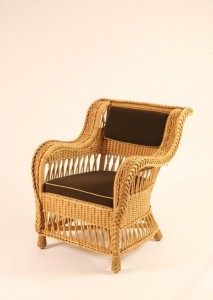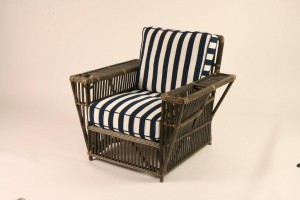We asked for a refresher in what distinguishes the three materials. Here's the Bielecky's summary of what we should probably remember from Earth Science class.
Wicker: This isn't a material, but a process of weaving reed (willow or seagrass, although Bielecky only uses reed) taken from a solid section of the vine. Since it comes from the core of the plant, it's naturally porous and therefore accepts stain easily.

Rattan: A vine native to the Southeast Pacific. Its solid core is strong enough to be used as a table and chair frame. When steamed, it can be bent to form graceful shapes. When sanded it becomes porous and can accept stains and paints.

Cane: The outside of the rattan plant; it can be used to wrap hardwood or rattan frames, or woven for seats or surface texture. It is non-porous and will retain its mottled surface.

Stop by Suite 911 at the DDB and revisit our Fireside Chat from last fall to learn more of their history.

No comments:
Post a Comment